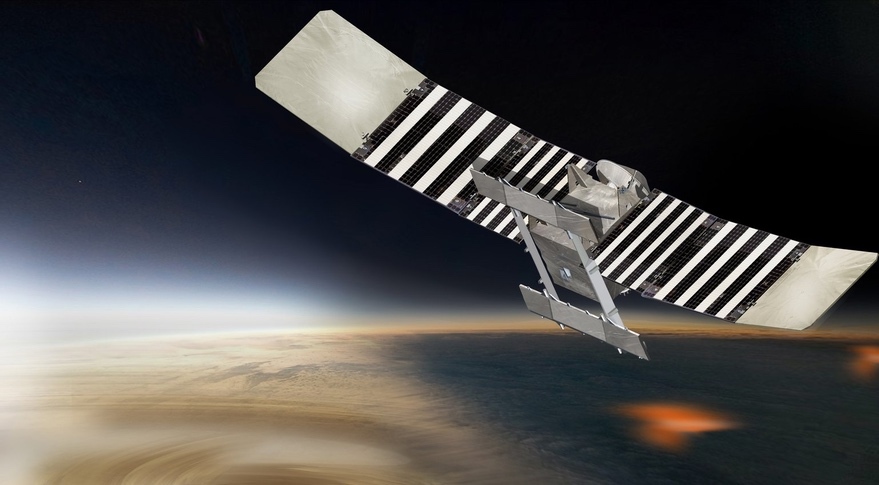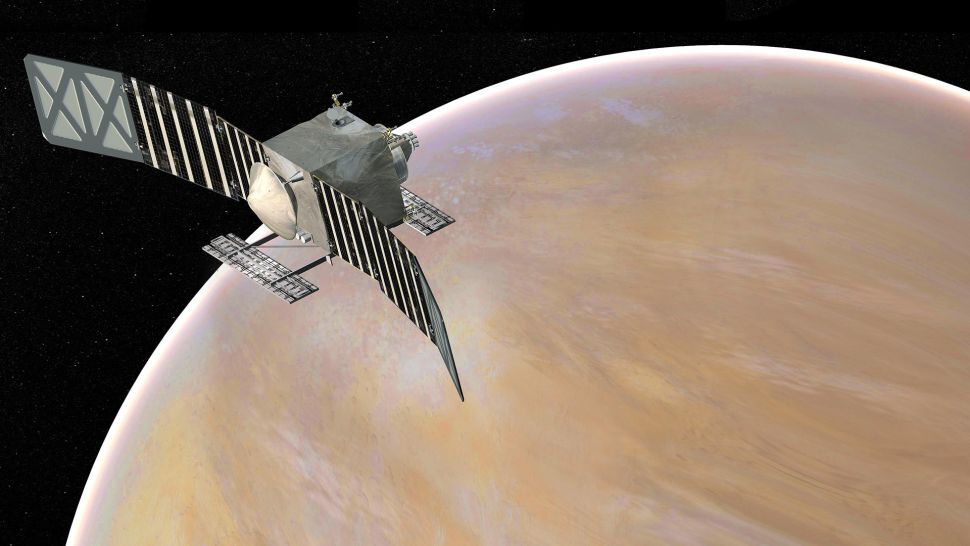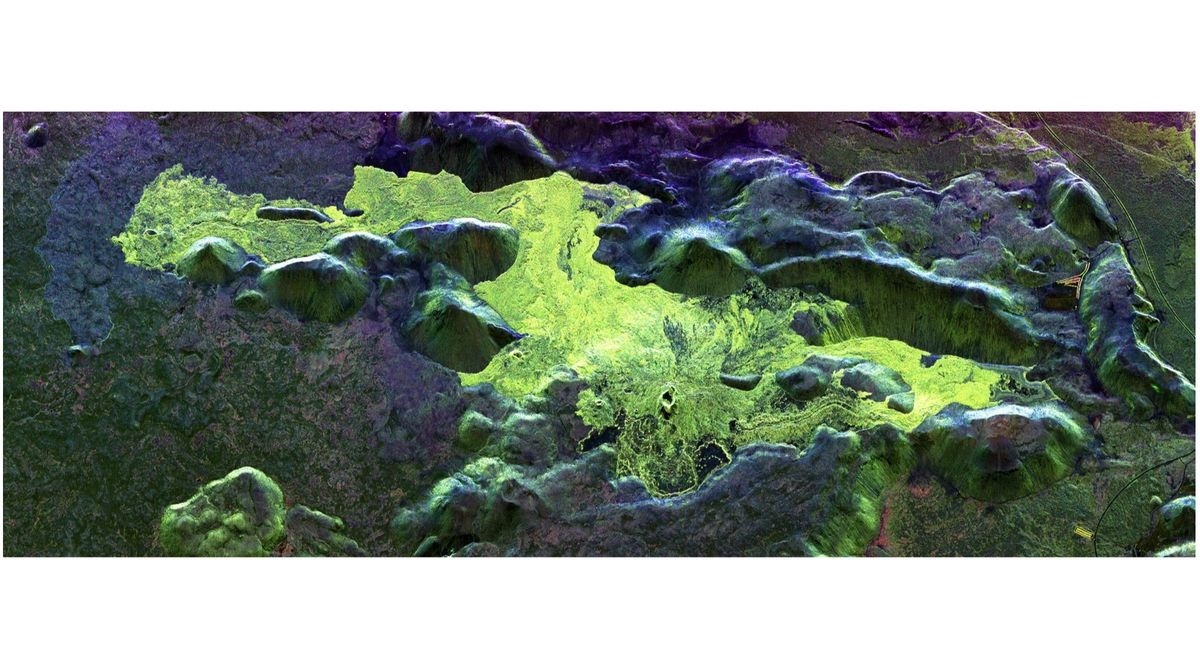NASA's VERITAS Venus mission might be on hold, but team members continue to test out its gear here on Earth.
The German Aerospace Center (known by the German acronym DLR), a VERITAS mission partner, is conducting field tests in Iceland this summer, using its airborne F-SAR radar sensor and an infrared imager called V-EMulator to study lava flows. As Venus is expected to have a volcanic surface, the volcanic landscapes of Iceland serve as a strong analog for what VERITAS might find on our neighboring planet.
"Characterizing and measuring the extent and type of volcanic and tectonic processes on Venus is key to understanding the evolution of the surface of Venus and rocky planets in general," Sue Smrekar, the principal investigator for VERITAS at NASA's Jet Propulsion Laboratory (JPL) in Southern California, said in a statement.
During two weeks of field operations, scientists and researchers from DLR and JPL will use the F-SAR radar system mounted on DLR's Dornier 228-212 aircraft to collect imaging data from Iceland's surface. Simultaneously, teams are collecting data and samples on the ground for laboratory analysis to supplement the radar data.
DLR is also testing V-EMulator, a prototype for the eventual Venus Emissivity Mapper that will be installed on VERITAS (whose name is short for "Venus Emissivity, Radio Science, InSAR, Topography And Spectroscopy").
"This will be of tremendous help to us in characterizing the mineralogical composition and origin of the major geologic terrains on the Venusian surface when VEM delivers 'true' Venus data during the mission phase," Solmaz Adeli, of DLR's Institute of Planetary Research, said in the same statement.
NASA intended VERITAS to launch in 2027, but due to institutional troubles at JPL, among other issues, the mission has been delayed indefinitely. It is expected that VERITAS might launch in the early 2030s, though mission funding has been reduced and further delays might occur.
As these three missions show, scientific interest in the second planet from the sun has surged over the past few years. Researchers increasingly view Venus as a possible abode for life, both in the ancient past and in the present day. Life as we know it cannot exist on the planet's scorching-hot surface today, but conditions about 30 miles (50 kilometers) up in the clouds are much more Earth-like.
The field campaigns will help refine the VERITAS mission, which is expected to fly no earlier than 2031.
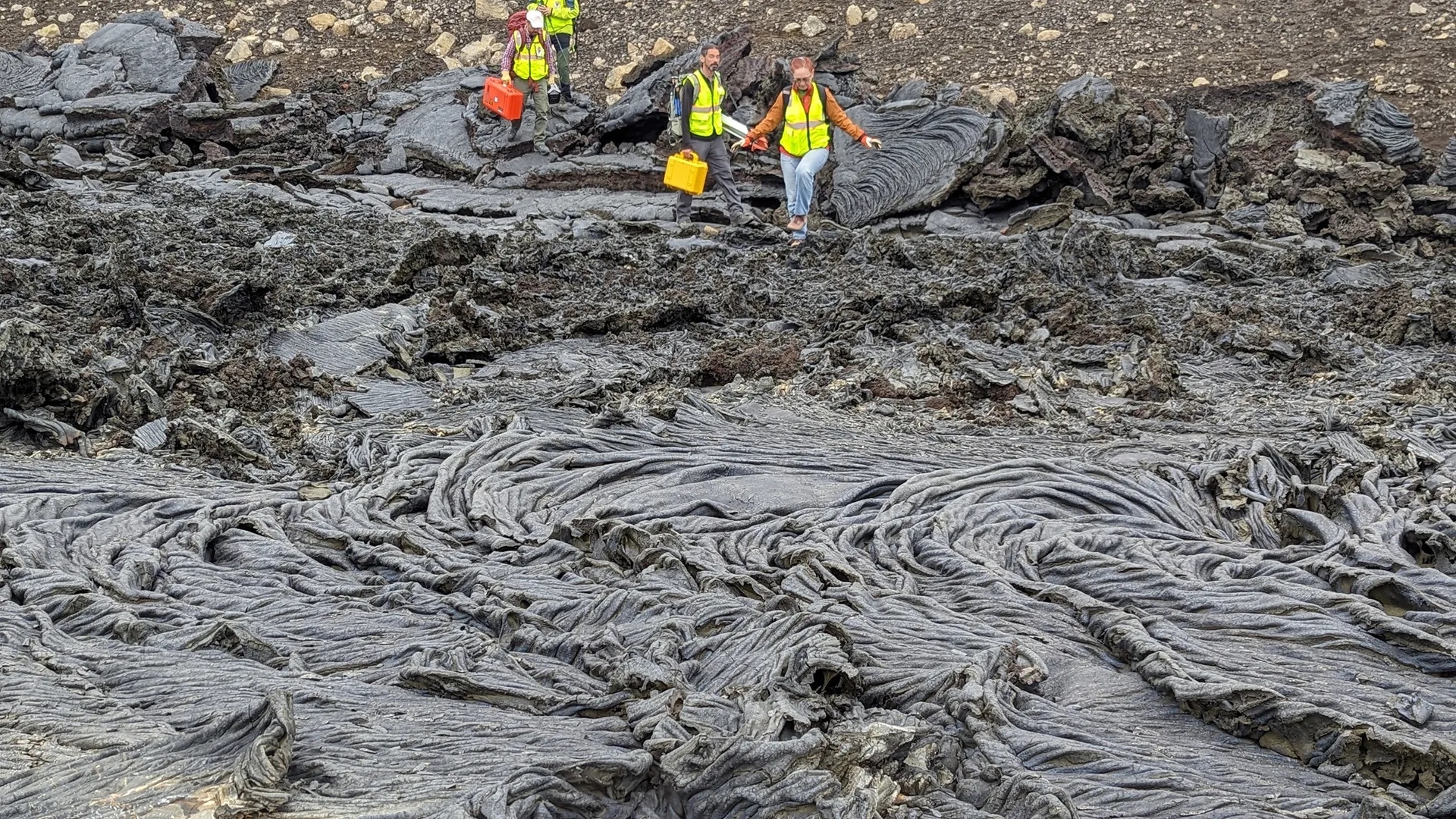
Members of the VERITAS science team descend a slope to new rock formed from a recent flow of lava during their Iceland field campaign in early August 2023. The team used the volcanic landscape as a Venus analog to test radar technologies and techniques. (Image credit: NASA/JPL-Caltech)
While NASA's VERITAS Venus mission continues to be on hold, team members have been perfecting technologies on Earth in places that resemble the hellish planet.
Early last month, one such field campaign took the mission's science team to a barren and rocky region in Iceland. There, they studied rocks and surfaces near an active volcano named Askja.
Such volcanic areas are being used as analogs of Venus to understand the different types of eruptions that may occur on its surface, and to test out various technologies and techniques to prepare for the VERITAS (or Venus Emissivity, Radio Science, InSAR, Topography and Spectroscopy) mission, which is not expected to launch sooner than 2031.
The VERITAS science team — which is being supported by a shoestring budget of $1.5 million until 2028, after NASA pulled the mission's funding earlier this year and disbanded its entire engineering wing — collected samples of young rocks and recent lava flows near the Askja volcano that will be analyzed in a lab, according to a NASA statement.
"Iceland is a volcanic country that sits atop a hot plume. Venus is a volcanic planet with plentiful geological evidence for active plumes," Suzanne Smrekar, senior research scientist at NASA's Jet Propulsion Laboratory (JPL) in California and the VERITAS principal investigator, said in the same statement. "Its geological similarities make Iceland an excellent place to study Venus on Earth, helping the science team prepare for Venus."
During their campaign, the team also visited Fagradalsfjall in southwestern Iceland to collect more samples for further analysis, while an aircraft circling above captured radar images of the same area.
"We collected information in the field to ground-truth the radar data that we will use to inform the science that VERITAS will do at Venus," Daniel Nunes, the VERITAS deputy project scientist at JPL, said in the same statement.
Ultimately, these efforts will help in refining the algorithms onboard VERITAS to better identify changes on the surface of Venus since NASA's Magellan spacecraft circled the planet over 30 years ago, scientists say.
In March, a new analysis of Magellan's data showed changes of a vent near one of the planet's largest volcanoes named Maat Mons, raising hopes about the long-held suspicion that Venus is volcanically active.
While the recent discovery has helped spur interest in revisiting the planet, delays to the VERITAS mission, which was supposed to be the first Venus mission after Magellan and provide fundamental information about the planet and its surface, have put at least some of those potential discoveries on hold. NASA continues developing another Venus mission, called DAVINCI, which is scheduled to launch in 2029.
Quelle: SC
----
Update: 9.11.2023
.
VERITAS mission warns of risks of launch delay
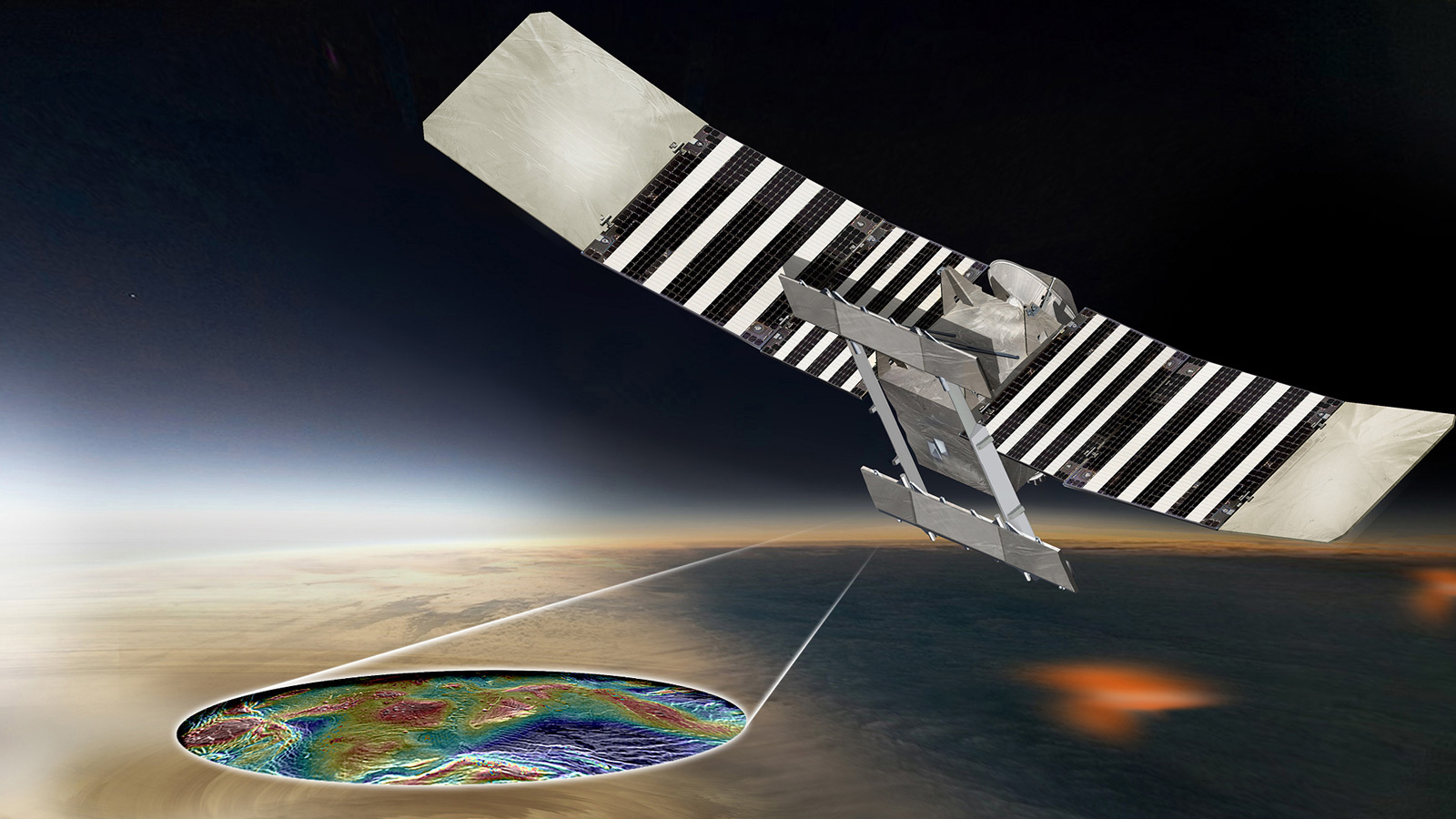
WASHINGTON — The head of a delayed NASA mission to Venus has warned that the project risks losing critical expertise if the agency doesn’t find a way to move up the mission.
NASA selected the Venus Emissivity, Radio Science, InSAR, Topography, and Spectroscopy, or VERITAS, mission in 2021 as one of two Discovery-class missions to Venus, at the time planned for launch in the late 2020s. VERITAS would go into orbit around Venus and study the planet using several instruments, including a synthetic aperture radar (SAR) imager.
However, the agency decided a year ago to delay the mission by three years, to no earlier than 2031, citing the findings of an review into delays of another NASA mission, Psyche, that found institutional problems at the Jet Propulsion Laboratory. The delay, NASA said, would address a “workforce imbalance” at JPL, which is the lead center for VERITAS, and free up funding needed to accommodate the Psyche delay.
At a meeting last week of the Venus Exploration Analysis Group, or VEXAG, the principal investigator for VERITAS argued that many of the issues that prompted the delay have been resolved. “Those issues are essentially behind us,” said Sue Smrekar of JPL, citing the launch in October of Psyche and progress on two other major JPL-led missions, Europa Clipper and the NISAR Earth science spacecraft, both on schedule for launches in 2024.
She said an extended delay, as still planned by NASA, threatened the personnel available for VERITAS, particular for its SAR instrument being developed at JPL. “There’s insufficient radar work at JPL. The radar workforce is really at threat,” she said. “It’s a really big technical threat for us.”
She noted that while NASA has provided some funding for VERITAS to maintain its science team, there was “zero support for engineering development” for the mission. That has led some engineering staff assigned to the mission to seek other work at JPL.
“We are losing our key team members all the time,” she said. “Over the dozen years it took us to get selected we developed a highly experienced, knowledgeable team, and they have to go take other jobs.”
The mission is studying launch opportunities for VERITAS in 2031 and 2032 as requested by NASA, but Smrekar said there was an earlier launch opportunity in November 2029 that was still feasible. An earlier launch would not only address the workforce concerns but also deconflict with two other Venus missions, NASA’s DAVINCI and ESA’s EnVision, arriving at Venus in the early 2030s.
“We can still make that opportunity if we get rolling in the next year,” she said of the November 2029 window.
The biggest challenge to that is available funding, which is facing difficulties from both overall budget pressures on the agency as well as cost growth on missions like Mars Sample Return. “It’s totally true that the budget is a mess, a disaster,” she acknowledged. “But that doesn’t mean that there’s no funding.”
A draft of the report accompanying the House version of a commerce, justice and science appropriations bill for fiscal year 2024, released last week by the House Appropriations Committee, does provide support for VERITAS. “The Committee recommends that NASA request sufficient funding to ensure a launch by the end of the decade,” it said of VERITAS, directing NASA to provide a budget profile “to ensure the mission can remain on track.”
“Our risk goes up the longer we are delayed and the longer we get no funding,” Smrekar said at the VEXAG meeting.
Quelle: SN
----
Update: 29.11.2024
.
VERITAS Venus mission seeks to avoid further delays
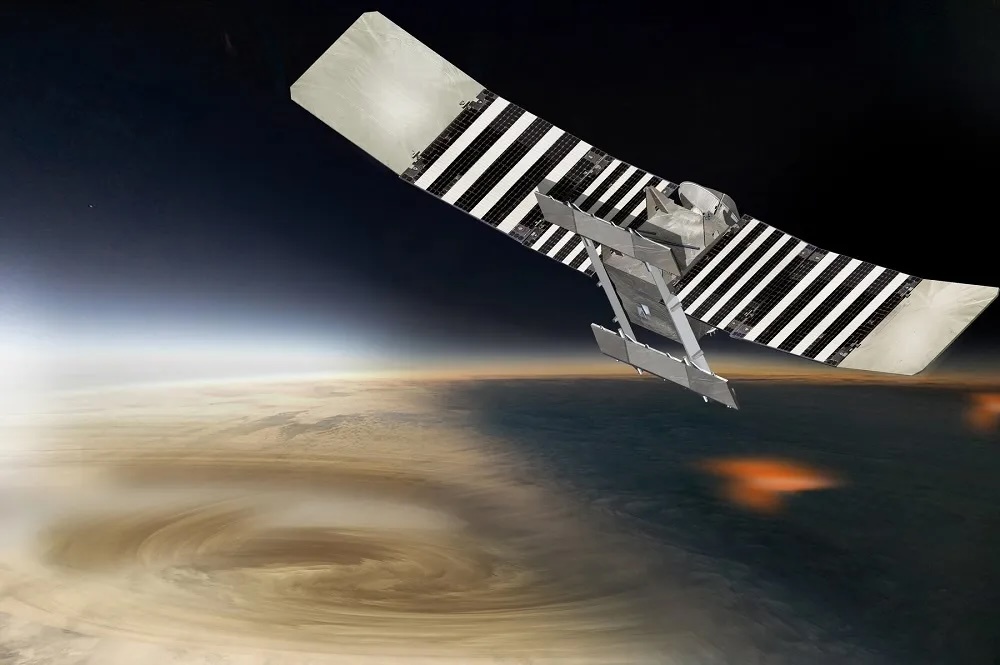
WASHINGTON — A NASA mission to Venus already delayed by three years because of institutional issues is seeking to avoid another delay of nearly a year and a half.
Work on the Venus Emissivity, Radio Science, InSAR, Topography, and Spectroscopy, or VERITAS, mission resumed in October after NASA directed the project to stand down in fiscal year 2024. NASA decided in 2023 to delay the mission to no earlier than 2031, a three-year slip, to address “workforce imbalance” problems at the Jet Propulsion Laboratory, the lead center for VERITAS, found during the development of the Psyche asteroid mission.
While the mission’s leadership hoped to bring up the launch from 2031, Sue Smrekar, principal investigator for VERITAS, said at the recent annual meeting of the Venus Exploration Analysis Group (VEXAG) is now working towards a launch in June 2031.
“VERITAS is standing up” after the pause in 2024, she said. “It feels really great to have engineering funding again to be moving forward.”
However, in her presentation at the meeting, she raised concerns that NASA might seek to further slip the launch. The next opportunity to launch VERITAS after June 2031 is November 2032. “There’s a real possibility of a further delay to ’32,” she said.
That slip, she argued, posed several challenges to the development and operations of the spacecraft. One of that the mission features several instruments contributed by the French, German and Italian space agencies, development of which continued while work paused on VERITAS itself. Further delays could put work on those instruments further out of phase with the main mission.
“Another delay would mean that those contributions would actually be delivered before the spacecraft goes into the preliminary design phase,” Smrekar said. “It increases the potential for disconnects.”
It also means, she said, that the personnel who worked on those instruments may not be available when it is time, years later, to integrate them onto the spacecraft. Those agencies are also involved with the European Space Agency’s EnVision mission to Venus, which, after the VERITAS delays, will now be developed roughly at the same time as VERITAS.
There are also potential conflicts between EnVision and VERITAS in operations. If VERITAS launches in 2031, it will be completing its aerobraking phase at Venus to enter its science orbit around the time that EnVision arrives, creating little conflict since EnVision will rely on NASA for supporting its own aerobraking phase. If VERITAS launches in late 2032, though, the two spacecraft will arrive within weeks of each other in 2033. “It would put a strain on the aerobraking team,” she said.
Smrekar said there would also be science impacts to a delayed launch. That includes not being able to observe with instruments some landing sites of other missions, including NASA’s DAVINCI spacecraft, which would allow scientists to calibrate the VERITAS data with the “ground truth” from those spacecraft.
Further delays also create the risk of losing key personnel who would move to other projects. “During that stand down, we lost a lot of key science team members,” she said. “The longer we get delayed, the more chance of losing key personnel.” That included, she added, one person who was laid off at JPL earlier in the month as part of lab-wide layoffs that affected 5% of its workforce.
While VERITAS works to avoid further delays, both DAVINCI and EnVision are pressing ahead. In a separate presentation at the VEXAG meeting, Thomas Widemann of the Paris Observatory said EnVision was still planning a launch in December 2031. ESA recently changed the launch vehicle for the mission from an Ariane 62 to an Ariane 64, with the extra performance intended to reduce the time the spacecraft spends in aerobraking once at Venus to enter its science orbit.
DAVINCI is looking at launch opportunities in fiscal years 2031 and 2032, said Stephanie Getty, deputy principal investigator for the mission, in another presentation. A preferred launch date is December 2030, she said, which is “scientifically amazing” in terms of providing images of key regions of Venus during two flybys of the planet before arriving in early 2033 to deposit a probe in the planet’s atmosphere.
Quelle: SN
